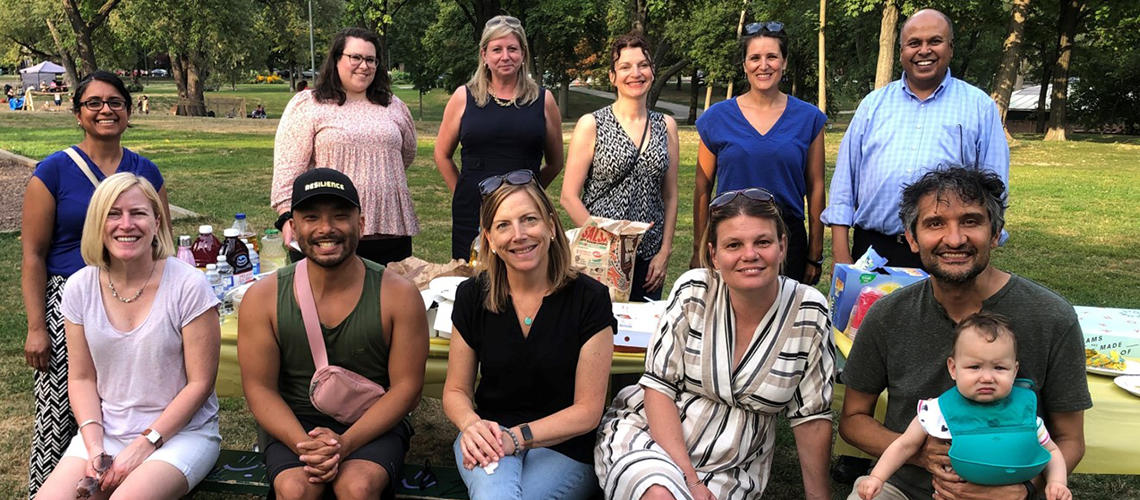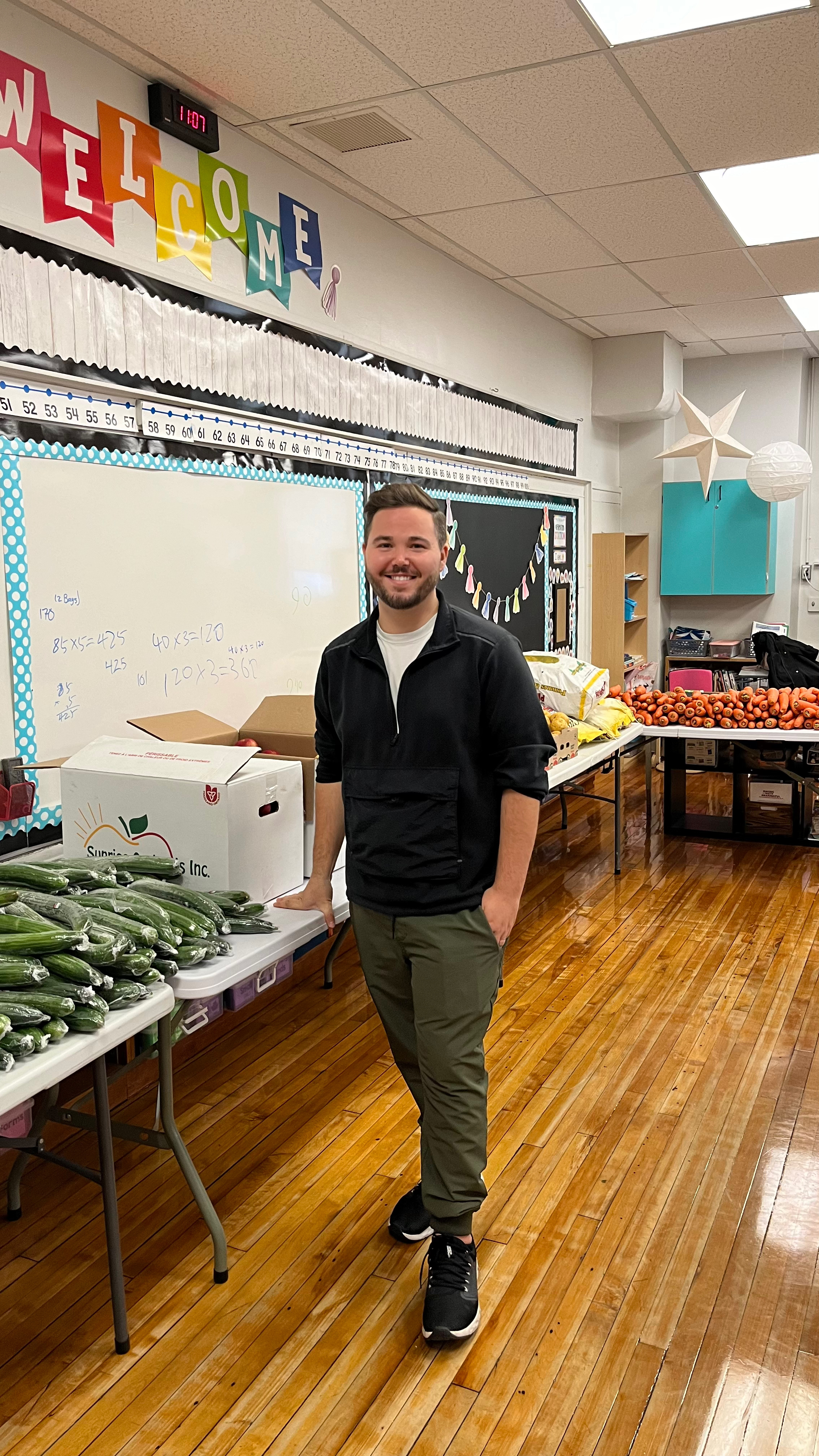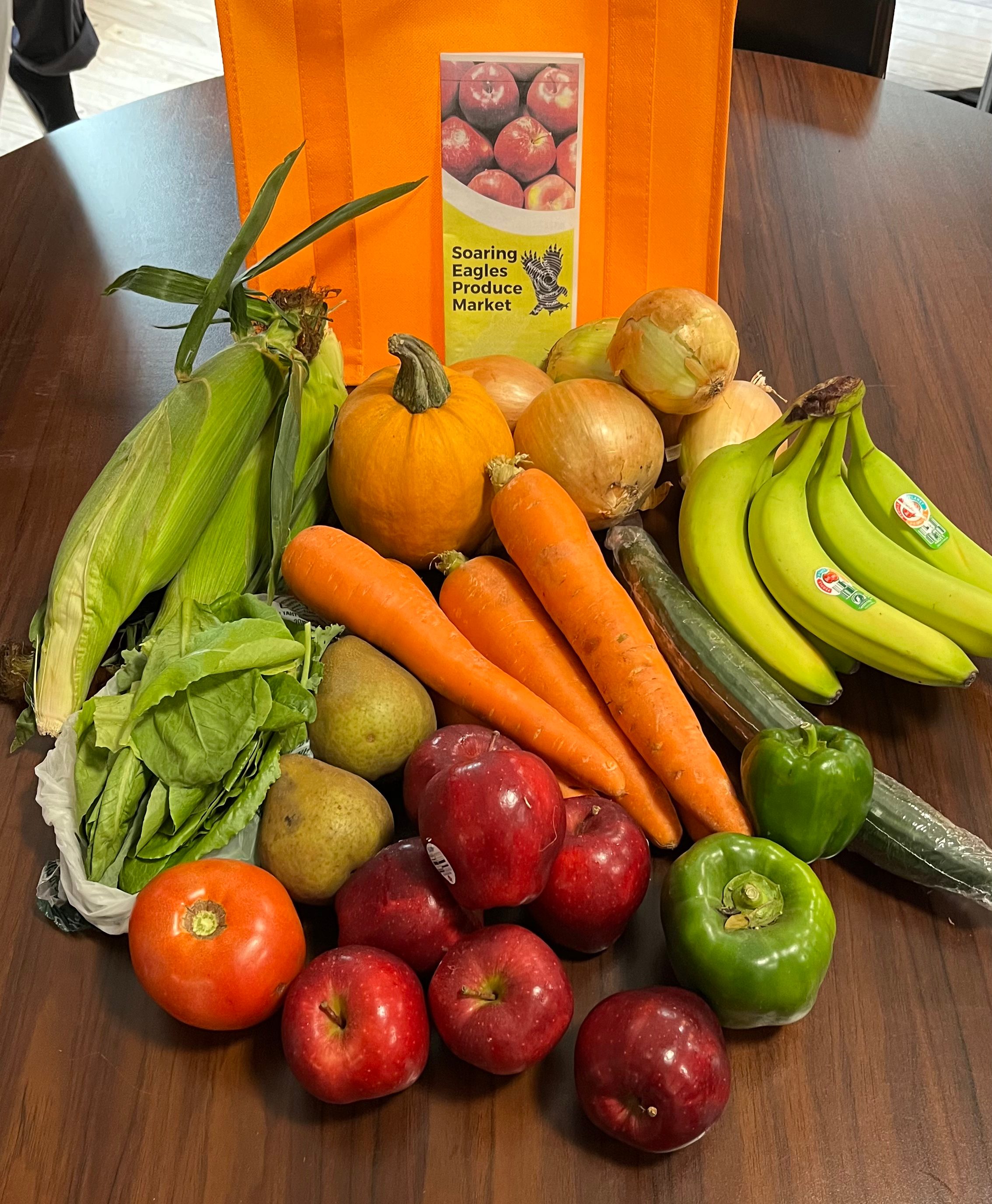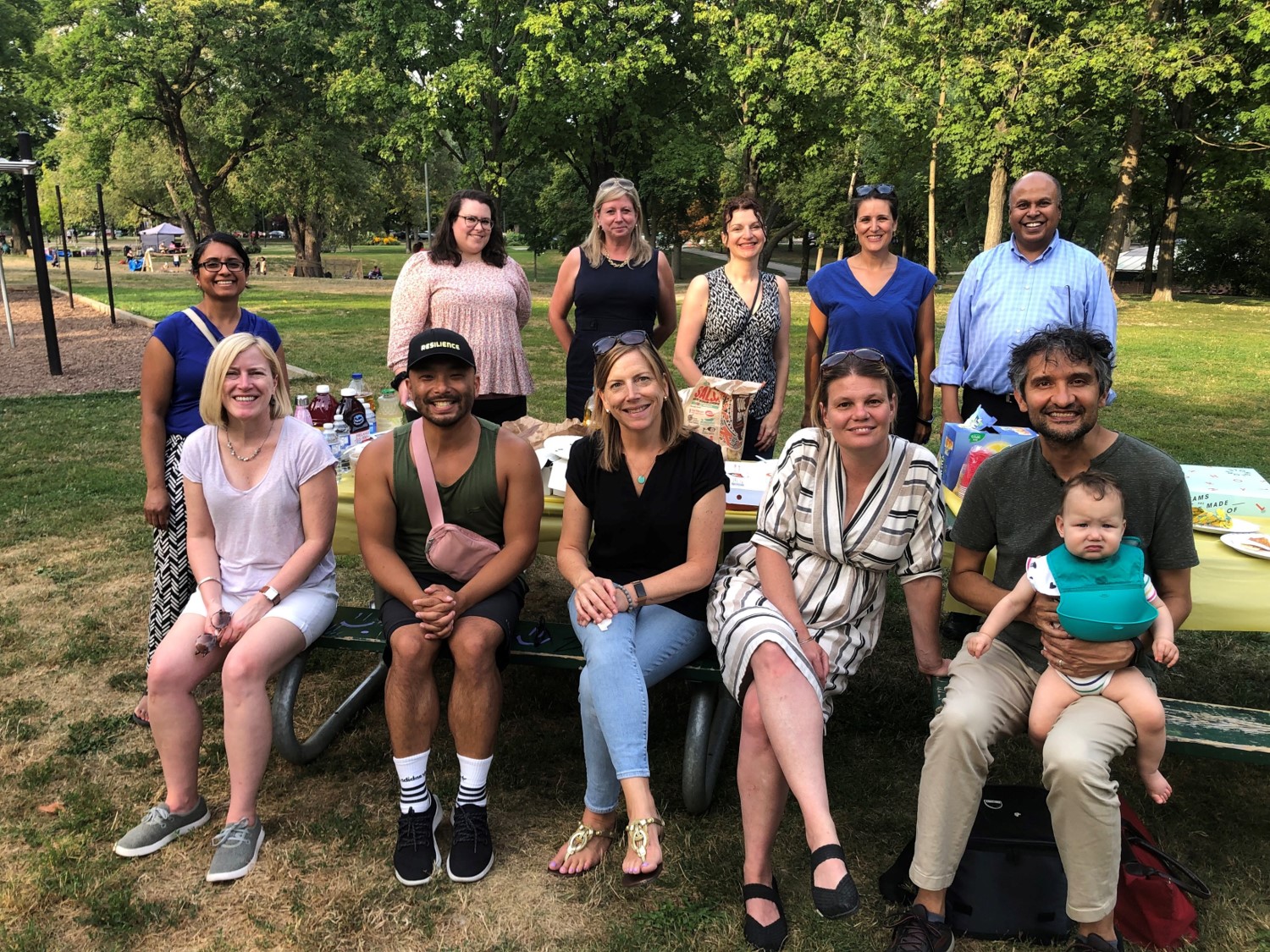
RNAO’s 18th annual Best Practice Spotlight Organization® (BPSO®) Symposium in September 2023 saw more than 235 representatives from local, national and international BPSOs gather in Toronto for three days of knowledge sharing and networking. Whether providing in-person or virtual concurrent sessions, or chatting with colleagues during poster sessions, participants shared reflections and success stories about their work as BPSOs. Some are beginning their pre-designation journey. Others are approaching the final stages before graduation. And others have achieved designation and are continuing their important work implementing additional best practice guidelines (BPG) to continue improving health outcomes for the populations they serve. No matter their stage on the BPSO path, they all have valuable perspectives and experiences to share.
At the heart of the BPSO program’s successful evolution are RNAO’s BPGs, which are adaptable to any sector, specialty, client or patient population, country or professional group (nurses are not alone on this journey). The stories shared here paint a clear picture of why the program has grown by leaps and bounds. Evidence-based recommendations and BPG implementation tools can be tailored to different organizational priorities. That’s part of what keeps the program thriving.
The out-of-the-box thinking we explore in these stories is indicative of the way all BPSOs approach their pursuit of optimal patient care and improved outcomes. Niagara Region Public Health, East Toronto Health Partners (ETHP) Ontario Health Team (OHT), and Central West Specialized Development Services – like so many other BPSOs – are leading new ways to embrace evidence in nursing practice that make a difference in all sectors and specialties.
Empowering youth to increase food access in their communities
Niagara Region Public Health achieved its BPSO designation in 2009. It has aligned an innovative new school project that focuses on food insecurity with the recommendations in RNAO’s Enhancing Healthy Adolescent Development BPG.
By Austin White
As a school health nurse, I see the impact that food insecurity can have on families and students’ ability to learn. I work directly with students to identify health concerns within their school, and support them in creating solutions to improve their health and wellbeing. I do this using the Comprehensive School Health Framework in conjunction with RNAO’s Enhancing Healthy Adolescent Development BPG.
At Edith Cavell Public School in Western Hill, St. Catharines, I partnered with Grade 4/5 teacher Alison Edward to highlight nutrition and food security with her students. Our work began with a vision to promote nutritious eating and empower students to create a positive impact in their community.
The students identified places they might access nutrition: convenience and/or grocery stores, restaurants, and more. Through this process they concluded that many families within their school have difficulty accessing nutritious food. Our goal was to find a way to increase families' access to fresh, affordable produce by creating a consistent access point at the centre of their community – their own school.
With the support of United Way Niagara, we launched the first School Produce Market, calling it “Fresh West Market.” The name came from the students, who planned to offer the “freshest produce in the west." This monthly market – which is student led – allows families to purchase bags of fresh produce for only $5, using an online pre-order model. The class is responsible for advertising, collecting orders, choosing/ordering the produce, and hosting the market.
The initiative is completely integrated into class time to align with curriculum expectations. Students learn about media literacy through their advertisements for the market. They learn about math and budgeting by calculating how much money comes in, and how much produce they can order. They even learn about nutrition as they write recipes for the food they sell each month.
The success of the program – which is unprecedented – has led to the creation of a second school market at Soaring Eagles, an Indigenous alternative education school in Niagara. Through this second market, and thanks to ongoing and generous support from United Way Niagara and the Soaring Eagles school board, students have provided between nine and 13 kilograms of produce to families each month. They have distributed almost 450 kilograms of fresh produce within their first school year.
Using RNAO’s BPG, and both the Knowledge-to-Action Framework and Social Movement Action Framework, we have launched the School Produce Market Program and developed a toolkit to support more schools in increasing food access in their communities.
The School Produce Market Program Toolkit has been written to guide public health nurses, students and teachers through the entire process, and align each step with curriculum expectations for Grades 4 to 8. This 2023/24 school year, the program will be expanding to six more schools across the Niagara Region, bringing the total number of school markets to eight.
Witnessing the students' growth, passion and dedication to this initiative has been the highlight of my career. This program has not only increased access to fresh, affordable produce for families. It has also instilled a sense of pride and empowerment in the students.
Family and patient advisors bring real-life perspectives to OHT
East Toronto Health Partners (ETHP) Ontario Health Team (OHT) will achieve its BPSO designation in 2024. Using RNAO’s Person- and Family-Centred Care BPG, it has expanded its community advisory council from just five members to 60 who are involved in strategic planning and program/service development.
By Anne Wojtak and Nena Pendevska
In October 2019, ETHP embarked on its multi-year partnership with RNAO to improve patient outcomes through evidence-based practice and robust staff and community engagement. We committed to implementing four guidelines over four years, across several partner organizations. Our OHT has benefited considerably from the evidence-based recommendations and implementation tips in the guidelines.
Using the Person- and Family-Centred Care BPG, ETHP developed its first collaborative Quality Improvement Plan in 2020 with a shared focus across our partner organizations to improve patient and caregiver involvement in care planning and treatment, across various care settings.
From this starting point, ETHP has sought to demonstrate leadership and a commitment to person- and family-centred care in all that we do. A key example is the creation of our Community Advisory Council (CAC), which supports all organizations across our OHT.
Our CAC started as a small group of five patients and caregivers who were brought together to help with the development of our OHT application. Once we were approved as an OHT, the small group of five quickly grew to 15 in the first year. New members joined us as a result of thoughtful recruitment targeted to diverse communities in different East Toronto neighbourhoods.
Our engagement strategy focuses on involving patient and caregiver advisors in both strategic planning and program and service design. Supportive leadership and clear accountability are key enablers of our success, and our leadership team proactively identifies a variety of engagement opportunities to involve the community. Our last ETHP biannual planning session in July 2023 drew 160 participants, and more than 40 of them were community members. In one of our workshops, the ETHP caregiver advisory group helped to design animated instructional videos to help patients and caregivers navigate the health-care system.
We incorporate our patient and caregiver advisors’ input in whatever way possible, including surveys and focus groups. And we see the value they bring to the work of the different ETHP committees and dedicated advisory councils. Using this approach to engagement, we have created five additional advisory councils – two residents’ councils in the Thorncliffe Park and Taylor Massey neighbourhoods of East Toronto, a caregiver advisory group (noted above) and two youth advisory councils.
Over the past three years, we have successfully grown our community network to 60 active members. Our recruitment is very focused, with specific attention on priority neighborhoods and priority populations. We know that advisory councils comprised of members who are representative of the community often provide a platform for a broader, more diverse range of perspectives. Having robust engagement is particularly important for OHTs, since we are tasked with meeting the needs of the broader population.
We recognize that this work would not be possible without the dedication of our committed advisors who collectively contribute numerous volunteer hours of their time to bring to the table the patient and caregiver voice.
Central West Specialized Developmental Services (CWSDS) just joined RNAO’s BPSO program as the first-ever BPSO in a sector focused on adults with intellectual and/or developmental disabilities (IDD) and complex needs. Implementing the Preventing Falls and Reducing Injury from Falls BPG has helped the organization address the unique needs of this population.
By Jhanvi Kothary and Thaaniya Theivendiran
CWSDS is proud to be the first BPSO in the developmental service sector, providing community and supportive living services for people with IDD and complex needs in Halton, Peel, Dufferin and the regions of Waterloo and Wellington. Our values of accountability, adaptability, collaboration, inclusion, innovation and respect provide a solid foundation in the development and implementation of our person-centred Falls Prevention Program within our supportive living homes and day services program.
Our collaboration with RNAO has enabled us to build momentum by recruiting health professionals in a variety of fields to become best practice champions in support of the Preventing Falls and Reducing Injury from Falls BPG.
Our Preventing Falls Committee includes representation from all of these interprofessional groups, including direct support professionals, a family physician, occupational therapists, behavioural therapists, RNs, a quality and assurance coordinator, manager of supportive living and senior leaders.
With guidance and support from the RNAO BPG team and other developmental organizations, we created tools and resources that are unique to a congregate care setting and specifically for people with intellectual and/or developmental disabilities.
During our presentation at RNAO’s September symposium, we highlighted how our Falls Prevention Program has evolved to include the development of appropriate assessments, interventions and resources to minimize fall risk factors and decrease the number and severity of injuries resulting from falls.
During the development of this program, our committee recognized the limited tools and resources geared towards addressing the complex needs of people with IDD in relation to falls management. With this in mind, we embarked on the journey to customize a program tailored to the needs of people with IDD within a congregate care setting.
We assessed the environment and surveyed the people we support to gauge the suitability of the program in our practice setting. With guidance and support from the RNAO BPG team and other developmental organizations, we created tools and resources that are unique to a congregate care setting and specifically for people with IDD.
Our committee was thrilled to be at this year’s symposium to share our phased roll-out approach of the program, which included the introduction of our new falls prevention policy, the falls risk assessment tool, and comprehensive assessments for clinical practice in addition to accompanying resources and tools for accurate and consistent reporting for fall and near-miss fall incidents.
Given the limited cognitive and communication capabilities of the persons we support, we developed a head injury monitoring record to ensure accurate reporting of any abnormal findings or changes in health following a fall or near-miss fall resulting in a head injury.
As CWSDS strives to continue learning and leading collaboratively, we look forward to more opportunities to share our lived experiences in adoption of BPGs to provide excellence in care for people with IDD and complex needs.



